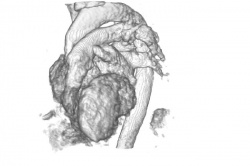Sheffield Hospitals to work on prestigious heart failure research project
Researchers in Sheffield have been given an mportant grant to trial state-of-the-art computer modelling systems that could provide a breakthrough in the treatment of patients with heart failure.


The project, funded by a grant from the Engineering and Physical Science Research Council (EPSRC), is a collaboration between researchers from the Northern General Hospital and St Thomas’s Hospital London. The multi-centre trial is using the latest 3D images of the heart to predict a patient’s response to a common treatment for the condition.
The researchers will use the 3D images in order to assess effectively how patients will respond to a pacemaker. Despite the effectiveness of this treatment, around 30% of patients do not derive clinical benefit from it. The trial is therefore looking into ways in which clinicians can accurately predict whether or not the treatment will work.
At present, clinicians have to use traditional tests such as an echocardiogram to assess whether a patient is suitable for a pacemaker. With the new personalised models of patients’ hearts, they will be able to measure a wider range of important factors to create more personalised models of a patient’s heart.
The trial will use the models both before and after a patient has a pacemaker fitted, across a period of a year, allowing the researchers to see how accurately the imaging predicts the patient’s response. If successful, the models should enable clinicians to increase the percentage of patients who respond well to pacemakers.
Heart failure is a common but very serious condition, affecting about 900,000 people in the UK every year. It is caused by the heart muscle becoming too weak or stiff to pump blood effectively.
Dr Paul Sheridan, Consultant Cardiologist, who is leading the work in Sheffield, said: “We are delighted to have received this funding. Heart failure is a very serious condition and it’s important we continue to look at ways in which we can improve our treatments for it.
“Using these computer models allows us to predict much more accurately whether a patient would be suitable for a pacemaker or whether we would need to consider alternatives. In future, we hope to be able to use this imaging in diagnosis as well as treatment, so it is an exciting development.”
Patient John Brewitt, 61, of High Green, has already joined the trial. He said: “I think this study is really good progression for patients. I’m happy to take part because the benefits of the trial could help not just me but many others too. Having the computer images done is easy and quick for everyone involved, and so I can really see how this can lead to improvements.”
15.12.2011











